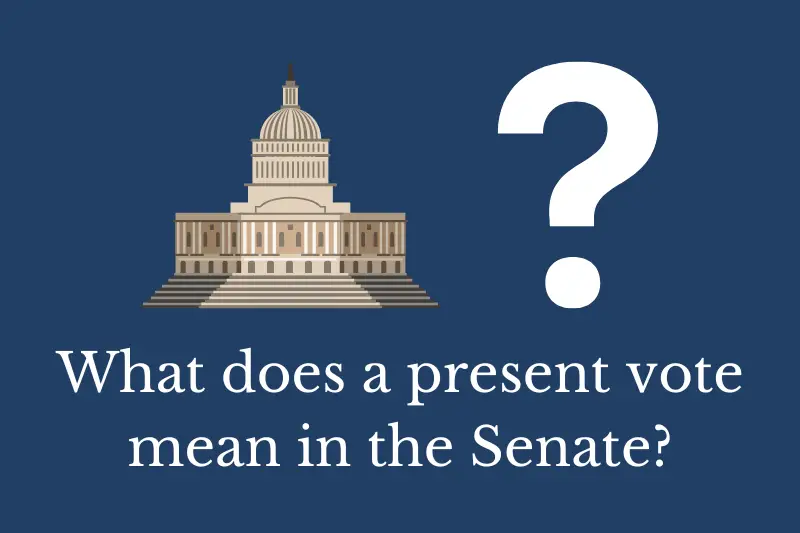A present vote in the Senate is a vote that does not count towards the final tally of a bill or resolution. It is a vote that signals a Senator’s presence for the vote, but does not indicate support or opposition for the measure being voted on.
What does a present vote mean in the Senate?
A present vote in the Senate is a vote that does not count towards the final tally of a bill or resolution. It is a vote that signals a Senator’s presence for the vote, but does not indicate support or opposition for the measure being voted on.
In the Senate, a present vote is considered an abstention, and is used as a way to indicate that a Senator is not taking a position on the issue at hand. Senators may choose to vote present for a variety of reasons. For example, they may believe that the issue at hand is not within the jurisdiction of the federal government, or they may believe that the issue is too complex or controversial to take a definitive position on.
Present votes are sometimes used as a strategic maneuver by Senators. For example, if a Senator believes that a bill will pass without their vote, they may choose to vote present instead of voting against it. This allows them to avoid taking a position that could be politically damaging, while also signaling their opposition to the bill. In other cases, Senators may vote present as a way to express their dissatisfaction with the legislative process, or as a protest against the majority party.
Present votes are relatively rare in the Senate, as Senators are usually expected to take a clear position on the issues being voted on. However, they are a recognized part of the Senate’s rules and procedures, and can be used by Senators who wish to make a statement without taking a formal position on a particular issue.
Present vote examples
One notable example of a present vote in the Senate occurred during the impeachment trial of President Donald Trump in 2020. Senator Mitt Romney of Utah, a Republican, voted to convict Trump on one of the two articles of impeachment, but voted present on the other article. Romney explained that he believed Trump had committed an impeachable offense, but that he could not vote to remove him from office on the basis of that offense alone. By voting present on the second article, Romney was able to register his opposition to Trump’s conduct without formally voting against him.
In another example, during the confirmation hearing for Supreme Court Justice Brett Kavanaugh in 2018, Senator Lisa Murkowski of Alaska voted present during the final committee vote. Murkowski explained that she was not prepared to vote against Kavanaugh, but that she was also not comfortable voting in favor of him. By voting present, Murkowski was able to signal her dissatisfaction with the nomination without taking a formal position on it.
Conclusion
In conclusion, a present vote in the Senate is a vote that does not count towards the final tally of a bill or resolution. It is a way for Senators to indicate their presence for the vote without taking a formal position on the issue at hand. Present votes can be used strategically by Senators, and are sometimes used to make a statement or register dissatisfaction with the legislative process. While relatively rare, present votes are a recognized part of the Senate’s rules and procedures.

